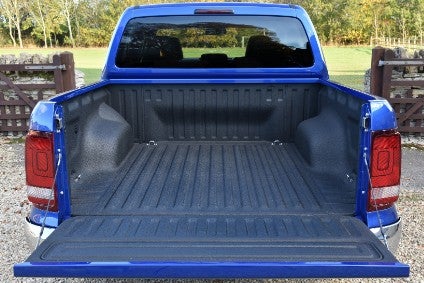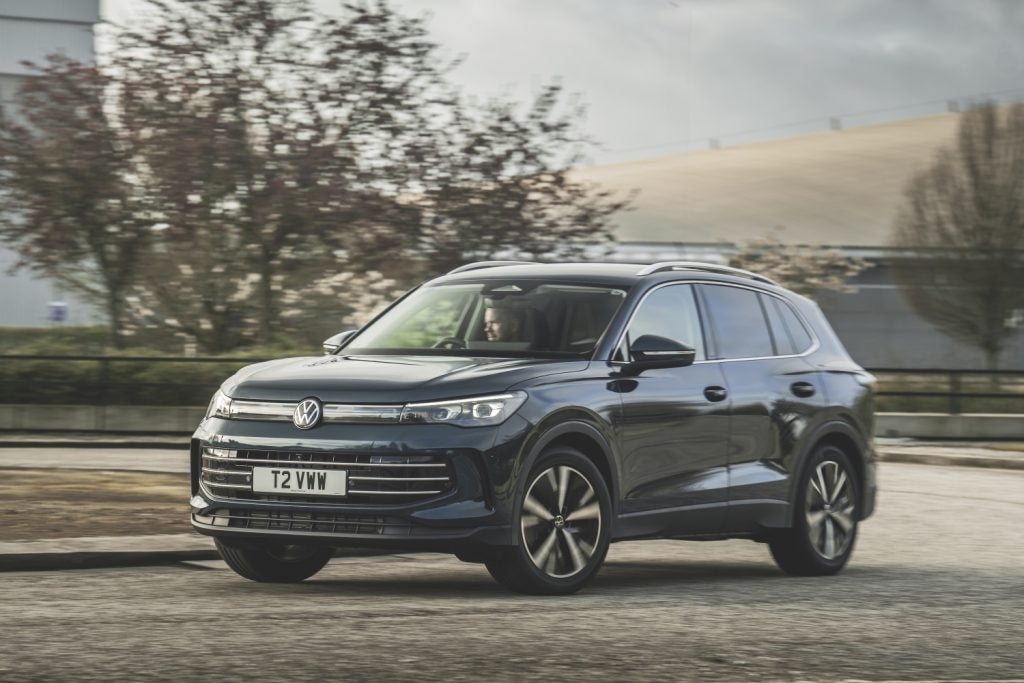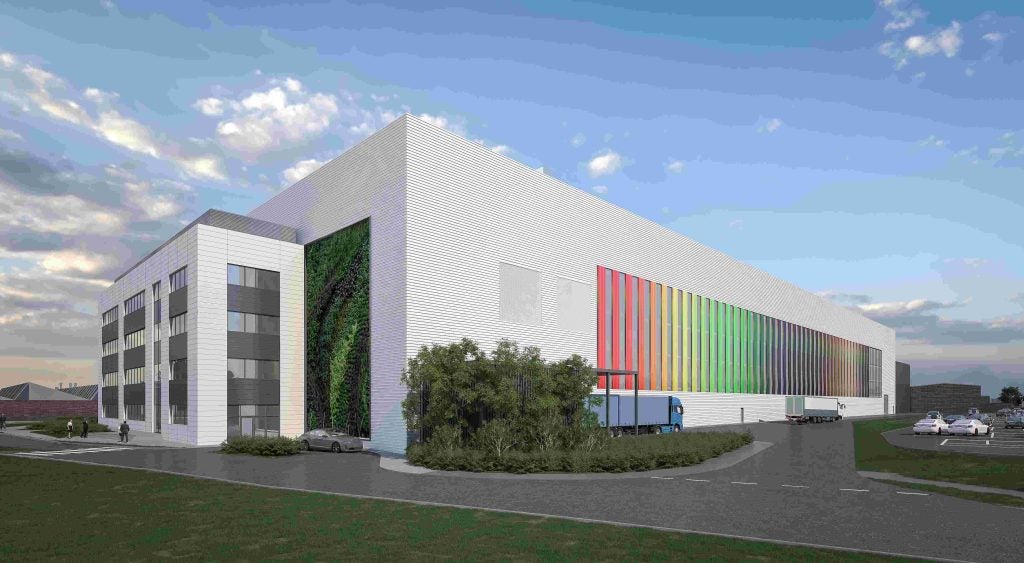
It’s coming up for nine years old and still the VW Amarok powers on, recently gaining a range-topping diesel V6. But is it good enough to beat the similarly powered and equally pricey new Mercedes X 350 d?
There’s no hiding the fact that the Amarok is a product of Volkswagen Commercial Vehicles. The new 580Nm 3.0-litre V6-powered top-spec version costs in excess of GBP40,000 but don’t expect to feel as though you’re in the lap of luxury. The carpets might be as soft as the leather seat-facings but anyone expecting to find a big touchscreen or even am always-smooth ride will be out of luck. The age of the basic vehicle plus its leaf-sprung rear suspension means the Amarok is in a different world to, say, the new Touareg. Against the odds though, some of the raw touches only add to the ‘authentic’ appeal.
Production – two plants plus two SKD operations
Volkswagen watched its Japanese and US rivals’ success in so-called mid-sized pick-ups (this one is 5,254mm long) the world over for a long time. The Amarok has a ladder frame construction and was originally available mainly in South America. Production used to only be at the Pacheco plant, with exports steadily increasing out of Argentina as VW made the model available to buyers in Germany, South Africa, Australia and Brazil. Mexico was added to that list and remains the vehicle’s only market in North America.
Volkswagen seems likely to keep making the Amarok for a couple of more years, the second generation model being due probably in 2020.
A vans plants in Hanover has produced Amaroks for European countries since mid-2012, with a third plant beginning assembly in 2015. This is on an SKD basis, taking place in Lagos. Dubai-based Stallion Group, the distributor for Volkswagen, Audi, Skoda and Porsche in Nigeria, owns what is a former VW plant in the giant city. The site was originally set up in 1975 to assemble the Beetle.
A fourth location, which is also the second one in South America, was added in September 2017. Volkswagen Commercial Vehicles supplies its partner FISUM with CKD parts from plants in both Germany and Argentina for the operation at local contract manufacturer AYMESA, an affiliate of FISUM. Up to 2,000 vehicles a year can be assembled at the plant in Quito, although as demand rises, as many as 10,000 a year can be produced in the Ecuadorian capital, VW says.
How well do you really know your competitors?
Access the most comprehensive Company Profiles on the market, powered by GlobalData. Save hours of research. Gain competitive edge.

Thank you!
Your download email will arrive shortly
Not ready to buy yet? Download a free sample
We are confident about the unique quality of our Company Profiles. However, we want you to make the most beneficial decision for your business, so we offer a free sample that you can download by submitting the below form
By GlobalDataVolkswagen seems likely to keep making the Amarok for a couple of more years, the second generation model being due probably in 2020. And an SUV variant in the style of the Mitsubishi Pajero Sport/Shogun Sport, Ford Everest/Bronco and Nissan Terra seems a sure bet as a spin-off.
History – two bodies and a range of diesel engines
A single cab body was added in mid-2011 but after this, the Amarok was left mostly alone during its first six years of production. Then came a facelift in May 2016. As well as the styling changes, a V6 TDI joined the existing 2.0-litre diesel. The 3.0-litre diesel from then on was available with the choice of three outputs: 163PS (120kW), 204PS (150kW) and 224PS (165kW). A version of the engine with higher outputs went on sale from March this year. Power is 258PS (190kW), or briefly, 272PS (200kW) with automatic overboost under hard acceleration. Torque is 580Nm which compares to 560Nm for the V6-engined Mercedes X-Class, with power identical to that of the top-spec Amarok.
Leaf springs or coils?
People spending this sort of money on a pick-up likely see it as a luxury vehicle, or at least expect it to have that image.
It isn’t just a power output that the X 350 d and Amarok 3.0 V6 TDI 258PS share. Unfortunately, the ride comfort of both could be better. The simple way to improve it is to load up the tray but will owners do that often? Or ever? People spending this sort of money on a pick-up truck likely see it as a luxury vehicle, or at least expect it to have an image of being one.
The suspension might not be as car-like as the multi-link arrangements fitted to a couple of the Amarok’s competitors but what it does have is a lot of travel. That’s going to be ideal for anyone who has to venture off road regularly, especially as the standard four-wheel drive system is as good as what Toyota fits to the rival Hilux. People with caravans (or more likely, boats, jet skis or trail bikes) will like the fact that a braked trailer of up to 3,100kg can be pulled. As for the tray’s weight capacity, this can take a payload of up to 1,112kg.
Standard eight-speed auto
Where the VW has always had an advantage over just about every comparable model is the eight-speed automatic gearbox. It was a clever move by Volkswagen to specify such a sophisticated transmission, knowing that no other pick-up in this size class had that many ratios. The benefit to economy and the CO2 average remains clear: this heavy, top-spec Highline variant is rated at an official 220g/km, with Combined economy of 33.6mpg. The fuel tank is a handy 80 litres, while the urea reservoir holds 13 litres of AdBlue.
It will be interesting to see how VW and all other makers of these size of pick-ups react to Ford’s decision to fit a ten-speed auto to its Ranger Raptor and, from 2019, to all versions of the Ranger for North America.
All that torque and power gets you to 62mph in a brisk 7.4 seconds and even with the large frontal area, big open tray and large spaces around the tyres for air to get trapped in, the 258PS Amarok manages to top 200km/h with a quote v-max of 127mph. It feels safe at the legal limit too (and beyond) and there isn’t the vagueness to its steering which can take the shine off some competitors such as the Nissan Navara/NP300 and Mitsubishi L200/Triton.
The question anyone thinking about buying an Amarok will ask themselves is whether or not this can be used as an everyday vehicle. The main downside to ownership can be an occasional inability to squeeze into parking spaces but there again, that applies to quite a lot of vehicles now sold in Britain. The VW pick-up is also especially wide (2,228mm including mirrors). You get used to twiddling the mirrors adjustment knob to fold mode. Lovers of elaborate German engineering are treated to a satisfying whir and some plastic gymnastics as the big casings swing skywards.
There aren’t too many gadgets in the Amarok 258PS Highline and that’s no bad thing. Fewer distractions for a start. You get a key, and a hand brake and each works just as well if not better than an electronic equivalent. As for the 16cm diameter dashboard screen, yes this isn’t exactly on the large side but some of us remain unconvinced by any huge display which requires a lot of fiddling due to being overloaded with functions.
The 258PS Amarok V6 TDI is some GBP4,000 cheaper than the top of the range X-Class.
The instrument cluster consists of two large dials, the steering wheel is exactly the right size and thickness and there is a seemingly endless number of places to stow things, each one lined with felt or rubber to prevent rattles. Bonus points too for all the 12V sockets: I counted four in the cabin and one in the load tray. Additional praise for Volkswagen thanks to its sensible decision to specify a standard full sized spare tyre. Electronic trailer stabilisation is another plus.
Is the most expensive Amarok worth the money? It certainly makes a SsangYong Musso seems like even better value than it is. Anyone wanting a Highline trim Amarok with the new engine won’t be spending much time comparing it to far cheaper pick-ups from Korean and Japanese makes (not forgetting the Ford Ranger and Fiat Professional’s MMC-based Fullback) though.
Amarok or X-Class?
The X 350 d is the newest VW pick-up variant’s only real competition but Mercedes needs to lift the quality of some of the interior’s plastics and give the steering wheel telescopic adjustment before any X-Class can be seen as an equal to the Volkswagen. A bigger surprise is that the Amarok’s leaf springs do a better job of keeping comfort to an acceptable level than the coils and multi-link elements at the back end of the Benz. Against that, the Nissan-based Mercedes has less body roll and is a bit more car-like through corners than the VW. What clinches it for the 258PS Amarok is, ironically, its affordability: the 258PS V6 TDI is some GBP4,000 cheaper than the top of the range X-Class, which starts at GBP46,040 before options.







